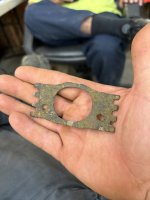KGCnewbieseeker
Sr. Member
In the 19th and early 20th Centuries, four major industries evolved within the San Juan Mountains of southwestern Colorado. These included mining, logging, cattle grazing (at lower elevations) and sheep grazing (at higher elevations). Each of these major industries has fueled the economy of the San Juan region for over a century.
Sheepherding has always been important to the peoples of the American Southwest. Indians, Hispanics, and Anglos have all engaged in the business of raising sheep. Even the famous Ute chief Ouray owned large herds of sheep which he proudly maintained.
The San Juan Mountains have figured prominently in the sheep industry as a source of prime grazing land since the early 1880's. This came about as low-lying fields and pastures became overcrowded with herds of cattle and sheep. The valleys and meadows along the headwaters of the San Juan River and its tributaries offered excellent grazing land and the sheep men took advantage of it. The high mountain pastures of the San Juans filled up with herds of sheep during the summer months.
The 1890's witnessed an economic slump in the mountain west brought on by drought and falling silver prices. The recession profoundly affected every aspect of life in the San Juan Mountains, including sheep raising. Fortunately, by the early 1900's, the industry had recovered somewhat. By 1903, nearly 300,000 sheep were grazing the high mountain pastures of the San Juans. Along with this glut in sheep populations came an increase in the numbers of men who managed the herds.
During the 19th and early 20th Centuries, sheepherders in the American West were mostly Hispanic men and boys who were extremely self-reliant and trustworthy. One of the many men entrusted with the care of the herds at this time was a Mexican sheepherder named Sasario Silva.
Sasario Silva worked as a sheepherder for the A.M. Hubbard ranch of Aztec, New Mexico during the summer of 1909. That summer would prove to be a truly momentous time for the young sheepherder. Somewhere near the head of Lime Creek, in the heart of the San Juans, Silva discovered an extremely rich vein of gold-bearing ore. The vein was fairly thin (2 to 3 inches wide) and consisted of native gold in a rusty, iron-stained quartz gangue. Silva collected samples of the ore which he displayed to his friends, family, and boss. Unfortunately, he was not fated to enjoy his discovery for long. He died shortly after his return from the mountains.
As far as anyone knows, Silva never revealed the exact location of the gold or for that matter ever returned to the vein himself. The rich lode remains hidden to this day.
Sheepherding has always been important to the peoples of the American Southwest. Indians, Hispanics, and Anglos have all engaged in the business of raising sheep. Even the famous Ute chief Ouray owned large herds of sheep which he proudly maintained.
The San Juan Mountains have figured prominently in the sheep industry as a source of prime grazing land since the early 1880's. This came about as low-lying fields and pastures became overcrowded with herds of cattle and sheep. The valleys and meadows along the headwaters of the San Juan River and its tributaries offered excellent grazing land and the sheep men took advantage of it. The high mountain pastures of the San Juans filled up with herds of sheep during the summer months.
The 1890's witnessed an economic slump in the mountain west brought on by drought and falling silver prices. The recession profoundly affected every aspect of life in the San Juan Mountains, including sheep raising. Fortunately, by the early 1900's, the industry had recovered somewhat. By 1903, nearly 300,000 sheep were grazing the high mountain pastures of the San Juans. Along with this glut in sheep populations came an increase in the numbers of men who managed the herds.
During the 19th and early 20th Centuries, sheepherders in the American West were mostly Hispanic men and boys who were extremely self-reliant and trustworthy. One of the many men entrusted with the care of the herds at this time was a Mexican sheepherder named Sasario Silva.
Sasario Silva worked as a sheepherder for the A.M. Hubbard ranch of Aztec, New Mexico during the summer of 1909. That summer would prove to be a truly momentous time for the young sheepherder. Somewhere near the head of Lime Creek, in the heart of the San Juans, Silva discovered an extremely rich vein of gold-bearing ore. The vein was fairly thin (2 to 3 inches wide) and consisted of native gold in a rusty, iron-stained quartz gangue. Silva collected samples of the ore which he displayed to his friends, family, and boss. Unfortunately, he was not fated to enjoy his discovery for long. He died shortly after his return from the mountains.
As far as anyone knows, Silva never revealed the exact location of the gold or for that matter ever returned to the vein himself. The rich lode remains hidden to this day.




